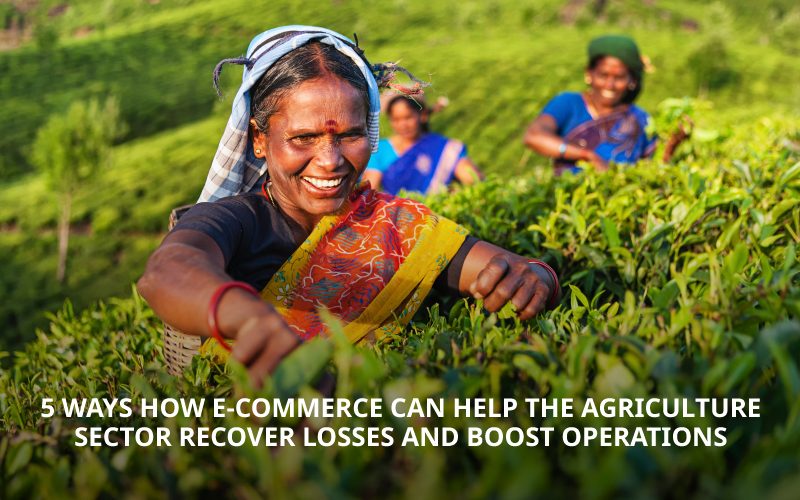Agriculture is the primary livelihood for over 58% of the Indian population and India is also the second-largest manufacturer of wheat and rice to the world.
In fact, the Government has stated that agriculture sector growth has been up by almost 60% this year, despite COVID affecting the sector in other ways, such as technology and jobs.
The Government is looking to revive the economy through its primary MSME category – farming and agri-tech. They expect agriculture to add over 0.52% to the economy’s growth in the long term.
And to do so, there have been some significant measures introduced by the Government, and certain expectations from the agriculture sector that need to be met.
Financial incentives the Agriculture Sector expects from the Government
Imagine not being able to have your morning coffee because production was stalled due to no funding from the Government!
- The agriculture sector (mainly dairy and sugar) has demanded fiscal incentives from the Government to handle losses.
- The textile industry is seeking an extension of the moratorium on term loan repayment by 6 months.
- The dairy industry is reeling under accumulated inventory from dairy farmers.
How e-commerce can save the agriculture sector
Currently, Indian farmers face a whopping loss of Rs 93,000 crore post-harvest.
The Government recently announced a slew of changes to the Essential Commodities Act, 1955. Most of the amendments rely on farmers and agri-businesses switching to an e-commerce market. Some of the initiatives include:
#1 – Tax saving reforms for agri-businesses
The amendment enables harmonisation of the various taxes that farmers pay to the Agricultural Committee. It ranges from 1% in Rajasthan to 8.5% in Punjab. The amendments also further empower farmers to engage with processors aggregators, wholesalers and exporters.
And what better platform for that than e-commerce?
#2 – Ease in supply chain management
E-commerce paves the way for digital adaptation, which as per the amendments to the Essential Commodities Act will help reduce costs, especially for farmers who are not in a position to bargain.
Earlier, farmers would suffer huge losses when there are the bumper harvest of perishable commodities. With E-commerce and adequate processing facilities offline, a lot of this wastage is reduced. This also removes fears of private investors interfering.
“ The freedom to produce, hold, move, distribute and supply will lead to harnessing of economies of scale and attract private sector/foreign direct investment into agriculture sector. It will help drive up investment in cold storages and modernisation of food supply chain.” – Agriculture Minister Narendra Singh Tomar, for The Tribune
#3 – Easier access to capital
Farmers who adopt technology will have easier access to streamlined capital online. E-commerce stores pave the way for micro-finance loans available on the platform itself.
Related Read: The only guide Indian entrepreneurs need to maintain and grow working capital
#4 – Optimum utilisation of produce
To gain easy access to capital, farmers should exercise their freedom to drive up investment. Also, selling produce via e-commerce completely eliminates the pressures of middlemen. This will help with inventory reduction so that farmers can sell produce at competitive prices.
#5 – Access to a larger customer base
Simply put, an online presence broadens access to customers all over India. It reduces wastage of produce and boosts sales rapidly. The amendment will help both farmers and consumers with price stability too.
Helping the agricultural sector access new supply chains and gain an e-commerce presence will help boost their income, and also reduce leakages and losses during transportation.
How Farmveda adopted e-commerce via the Instamojo online store
Founded by Dr Trilochan Sastry (Professor, Former Dean, IIM Bangalore) in 2016, Farmveda makes traditional, organic, idli/dosa mixes and podis directly from farmers houses, across 3 districts.
The company’s main mission is to take farmers further up the value chain and promote rural business in India. How do they do this? By setting up:
- An e-commerce store on Instamojo
- Social media handles – Instagram, Twitter and Facebook
- Designing a website
Dr, Sastry and his team realised that farmers were not getting the right price for their produce after months of hard work during the agriculture season. To tackle this, Farmveda was born.
Today there are over 25,000 + farmers working with Farmveda across 3 districts.
The company’s long term vision includes giving complete ownership to the farmers of India.
The switch to using Instamojo’s online store to sell their products helped Farmveda access a larger customer base across states, and also reduce post-harvest wastage.
Therefore, if you work in the farming and agriculture sector and also need to how to set up an online store to kick off your business, you’re already here. In 2 minutes, you can create your online store, and start selling.

